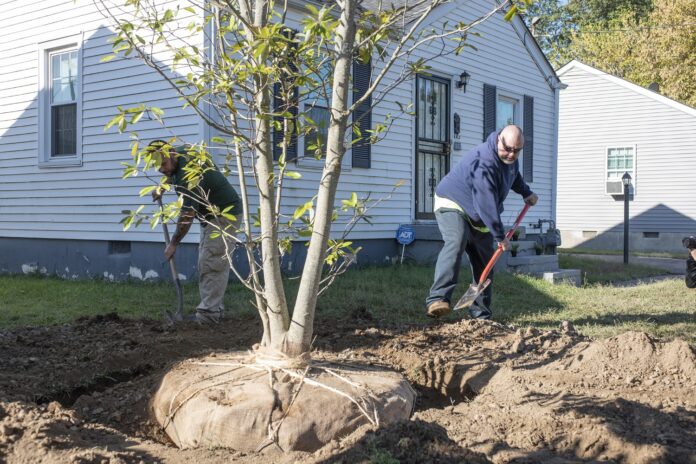
Evidence is growing that living in areas of high greenness, surrounded by trees, shrubs and other vegetation, has beneficial effects on human health. Researchers at the University of Louisville’s Christina Lee Brown Envirome Institute and other colleagues recently published two studies showing positive effects of greenness: one on cancer survival and the other on depressive symptoms.
In the first study, UofL researchers Aruni Bhatnagar, professor of medicine and director of the Envirome Institute, Ray Yeager and Daniel Riggs, with Carver Coleman and Arden Pope of Brigham Young University and others, analyzed retrospective data from more than 5.5 million cancer patients and survivors from 2003 to 2016. They found that cancer patients in greener counties lived longer than those in counties with less greenness. The protective effects of greenness against cancer mortality were seen with both males and females and individuals of all ages, but were more pronounced at urban locations. Individuals with cancers that were highly survivable – such as breast, prostate and skin cancer – benefited more from greenness than those with cancers with low survival rates such as brain, esophageal, liver, lung and pancreatic cancer.
The study, “Greenness, air pollution, and mortality risk: A U.S. cohort study of cancer patients and survivors,” published in the journal Environment International, evaluated associations between greenness and fine particulate matter in the air on causes of death in a large group of cancer patients and survivors in the United States.
“This is the largest study of the relationship between greenness and cancer mortality, and it provides clear evidence that living in green areas is beneficial to cancer patients,” said Bhatnagar “However, we do not yet understand why greenness protects against cancer mortality. Much more remains to be done to see whether greenness benefits cancer patients by lowering mental stress and anxiety or by reducing the levels of air pollutants or whether some other mechanisms are at play.”
The study also found that cardiopulmonary disease, but not cancer, was associated with higher levels of fine particulate air pollution. Mortality from cardiopulmonary causes – stroke, heart attack or COPD – was not affected by county greenness, except in rural locations.
Greenness and depression
A second study, led by Kandi Walker and Joy Hart, professors in the UofL Department of Communication, Bhatnagar and other researchers in the Envirome Institute, found that people’s satisfaction with levels of greenness in their neighborhood was associated with lower levels of self-reported depressive symptoms.
The researchers surveyed participants about their perceptions of greenness in their neighborhoods and their mental health symptoms and found that those who were more satisfied with the greenness surrounding their homes also reported lower depression symptoms on a health survey, the Patient Health Questionnaire-9.
The 44.5% of survey participants who reported they were satisfied with the level of greenness in their neighborhood collectively scored better on the health questionnaire for depression.
“Given the pervasiveness of depression in the U.S. population, any changes that can reduce depression are essential, particularly those that can affect a large number of people,” Hart said. “The findings of this study suggest that greening interventions that focus on greenness satisfaction may be a strategy to reduce depression in urban populations.”
The study, “The importance of urban planning: Views of greenness and open space is reversely associated with self-reported views and depressive symptoms,” was published in July in the journal Population Medicine.
South Louisville study participants needed
Participants in the greening satisfaction study were part of the Health, Environment and Action in Louisville (HEAL) study of the Great Heart Project, which is an ongoing assessment of the effects of neighborhood greenness on individual health. Additional participants are needed for the HEAL Study by the end of September. More information is available on the HEAL Study website.
“Together, these studies add weight to the importance of trees, shrubs and other vegetation in urban areas in benefiting and nurturing human health. Accumulation of such evidence strengthens the case that increasing greenness in urban locations can decrease the high rates of non-communicable diseases in cities,” Bhatnagar said. “And since greenness improves health in general, it may also be effective against infectious disease.”



